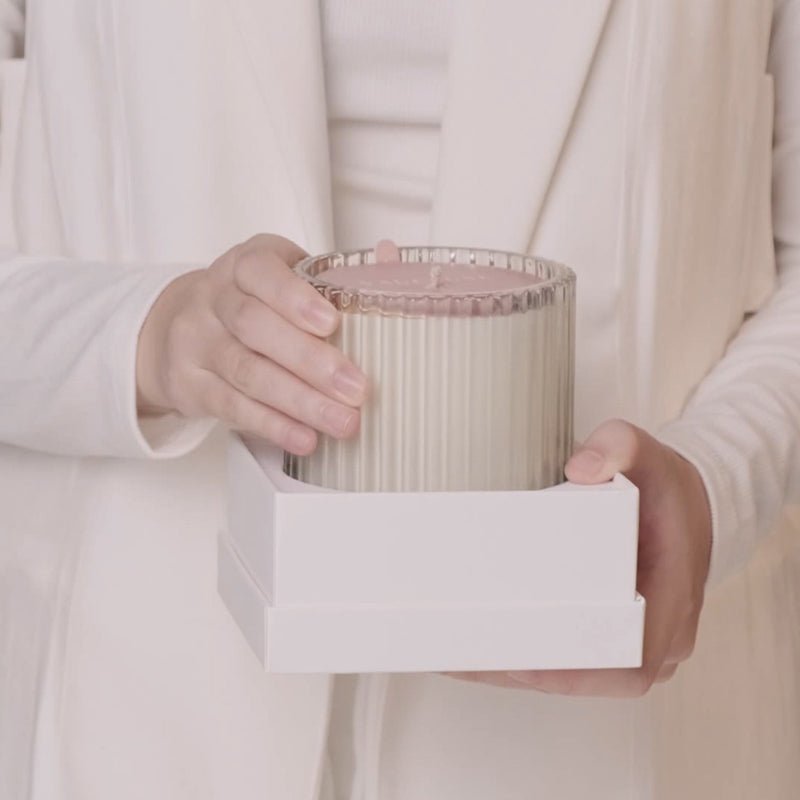Introduction:
Scented candles have long been cherished for their ability to transform a space, creating an ambiance that is both comforting and inviting. The flickering flame dances gracefully, casting a warm glow while releasing a fragrant aroma that fills the air. But beyond their aesthetic appeal, scented candles are also a testament to the intricate science of aromatic chemistry. In this article, we'll embark on a journey to uncover the secrets behind scented candles, exploring the fascinating world of aromatic compounds, fragrance blending, and candle-making techniques. Join us as we delve into the science behind these aromatic wonders and discover what makes the best smelling and most luxurious candles truly special.
Understanding Scented Candles:
At their core, scented candles are a harmonious blend of wax, fragrance oils, and a wick. The wax serves as the carrier for the fragrance, while the wick provides the means for combustion, releasing the scent into the air as the candle burns. But what sets scented candles apart is the careful selection and blending of fragrance oils, which are responsible for the captivating aromas that fill our homes. From soothing lavender to invigorating citrus, the possibilities are endless when it comes to fragrance selection, allowing candle-makers to create a diverse range of scents to suit every mood and preference.
The Role of Aromatic Chemistry:
Aromatic chemistry lies at the heart of scented candles, influencing everything from fragrance selection to candle performance. Aromatic compounds, such as essential oils and synthetic fragrances, are carefully chosen for their ability to evoke specific scents and emotions. These compounds undergo a series of chemical reactions during the candle-making process, ultimately determining the aroma and intensity of the final product. For example, esters are responsible for fruity aromas, while terpenes contribute to woody and herbal scents. By understanding the chemical composition of each fragrance oil, candle-makers can create unique and captivating scents that delight the senses.
Choosing the Best Smelling Candles:
When it comes to selecting scented candles, fragrance is undoubtedly a crucial factor. However, it's equally important to consider the quality of the ingredients and the candle's performance. The best smelling candles are made with high-quality fragrance oils that are expertly blended to create a balanced and long-lasting scent experience. Additionally, premium wax blends, such as soy or beeswax, offer a clean and even burn, ensuring maximum fragrance throw and minimal soot. By choosing candles crafted with care and attention to detail, you can elevate your home environment with captivating aromas that linger long after the flame has been extinguished.
Luxury Candles: The Epitome of Aromatic Excellence:
Luxury candles represent the pinnacle of candle-making craftsmanship, offering meticulously crafted compositions that exude sophistication and elegance. These candles are often infused with rare and exotic fragrance oils, sourced from around the world, to create unique and captivating scents. From the opulent packaging to the exquisite craftsmanship, luxury candles are a testament to the artistry and attention to detail that goes into creating the perfect olfactory experience. Whether you're drawn to the intoxicating blend of oud and amber or the delicate notes of rose and peony, luxury candles offer an indulgent sensory journey that captivates the senses and elevates the atmosphere of any space.
The Science Behind Scent Throw:
One of the key factors in evaluating the quality of a scented candle is its scent throw, or the distance at which the fragrance can be detected when the candle is burning. Achieving an optimal scent throw requires a delicate balance of wax formulation, fragrance concentration, and wick size. Too much fragrance oil can overwhelm the senses, while too little may result in a weak scent throw. By carefully calibrating these variables, candle-makers can ensure that their candles fill a room with a delightful aroma without overpowering the senses. Additionally, factors such as room size, ventilation, and ambient temperature can also influence scent throw, further highlighting the importance of precision and expertise in candle-making.
The Importance of Candle Care:
Proper candle care is essential for maximizing the performance and longevity of scented candles. This includes trimming the wick before each use, ensuring a clean and even burn, and storing candles away from direct sunlight and heat sources. By following these simple steps, you can enjoy your favorite scented candles to their fullest potential, allowing their captivating aromas to enhance your home environment for hours on end. Additionally, proper candle care can also help prevent issues such as tunneling, soot buildup, and uneven burning, ensuring a consistently enjoyable fragrance experience with each use.
Conclusion:
Scented candles are more than just decorative accents; they're a celebration of aromatic chemistry and the art of fragrance. From the careful selection of ingredients to the meticulous blending of scents, every aspect of candle-making is guided by the principles of aromatic excellence. Whether you're drawn to the comforting warmth of vanilla, the exotic allure of jasmine, or the invigorating freshness of citrus, there's a scented candle to suit every taste and occasion. So, next time you light a candle and bask in its delightful aroma, take a moment to appreciate the science and craftsmanship behind this beloved sensory experience. After all, scented candles aren't just about creating ambiance; they're about creating moments and memories that linger long after the flame has been extinguished.



